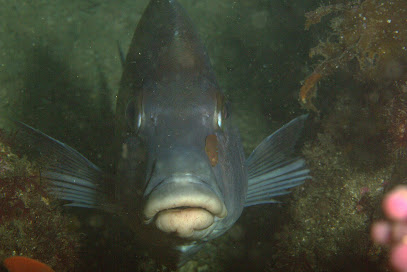Big Blue

Three years ago I was diving solo at Bare Island in Sydney. (As an aside, I like how we name things in Australia. If you want to go skiing you go to the snowy mountains. Flathead fish have a particularly flat head. And Bare Island is pretty bare. Although it does make me think twice before going for a dive at shark point.). It was an overcast day with only a little bit of swell, a perfect day for a dive to take a few pictures. My plan was to dive the west side of Bare Island. On the west side you can see pygmy pipe fish, sea horses, port jackson sharks (depending on the time of year), lots of nudibranchs, red indian fish, and anglerfish. Twenty minutes into the dive I was nearing the first cave as shown in Marco Bordieri’s map below when I spotted two black leatherjackets . The two leather jackets were dancing together in the water column, heads pointing to the surface, tails pointing to the sand. Twisting around each other, moving slowly up towards the surface, and then sl...


